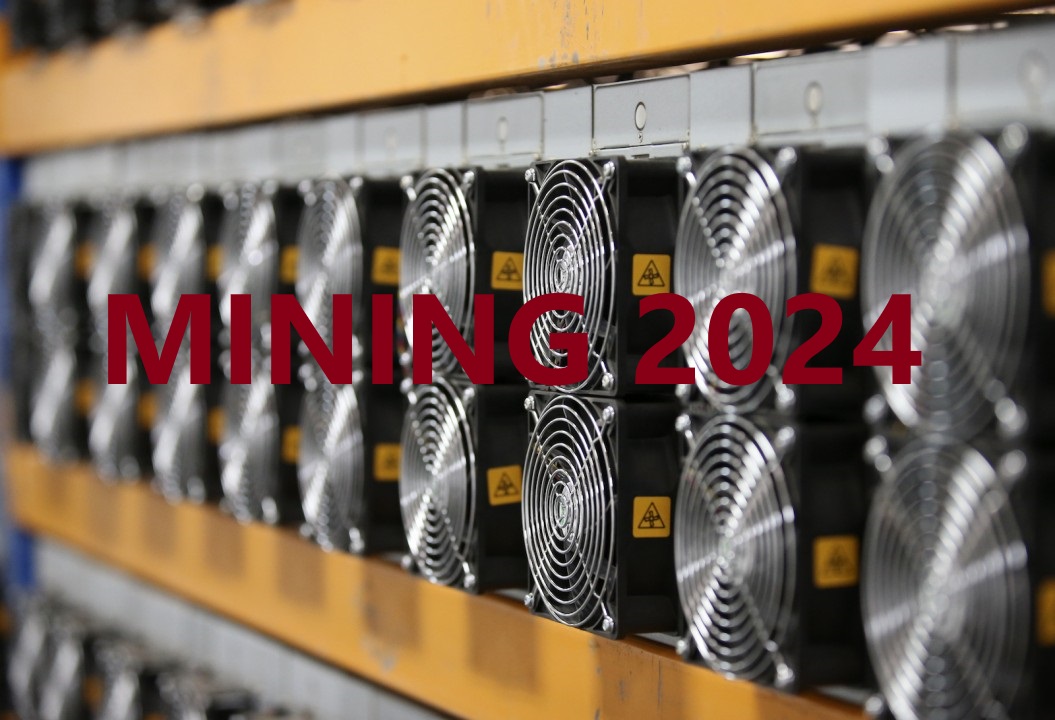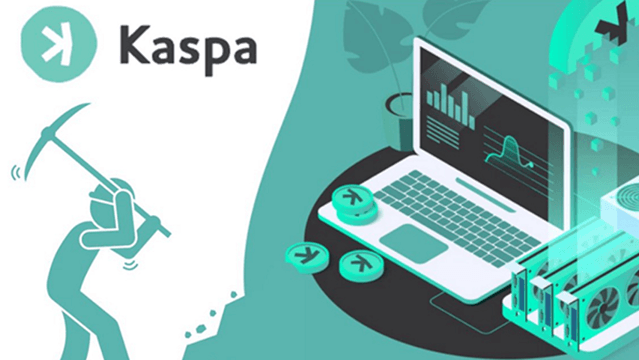 As the year 2023 comes to a close, a time when summaries are traditionally drawn in personal and business aspects of life, we will attempt to summarize the results of cryptocurrency mining in 2023. Cryptocurrency mining has long become a globally significant business, just like cryptocurrencies themselves, which are increasingly being recognized by states (not only from the African continent), on par with traditional financial instruments.
As the year 2023 comes to a close, a time when summaries are traditionally drawn in personal and business aspects of life, we will attempt to summarize the results of cryptocurrency mining in 2023. Cryptocurrency mining has long become a globally significant business, just like cryptocurrencies themselves, which are increasingly being recognized by states (not only from the African continent), on par with traditional financial instruments.
While in the past, yearly summaries were often focused on articles about graphics card hash rates, this time, for such conclusions, we decided to create a separate section and not clutter specialized articles with predictions made at the beginning of the year, as these might not always be of interest to visitors seeking specific data.
For instance, the results for 2022 can be found in this article: Hashrate of Amd, Nvidia, Intel video cards for 2023. Table.
As before, cryptocurrency mining is divided into two major groups: ASIC miners and GPU miners. CPU mining, or mining on central processing units, which saw a resurgence last year with the Zephyr project, is also worth mentioning, although since most older coins with CPU mining (such as Monero) consistently yield nearly zero results, it may not be worth discussing the revival of CPU mining in 2023. However, it should be acknowledged that periodically, new coins emerge, and those who followed the emergence of new CPU projects were able to recoup their CPU mining farms during the year.
In 2023, the first CPUs from Intel and AMD with built-in modules for artificial intelligence (AI) appeared, essentially featuring built-in ASICs for calculations with 8 and 16-bit precision. Considering that AI is currently a popular topic (just look at the names of new crypto projects), it is not excluded that in the near future, i.e., in 2024, a crypto project focused on AI work (model training, answer generation) may emerge. The emergence of such projects, which theoretically could utilize the built-in NPU (Neural Processing Unit) in CPUs for artificial intelligence, could breathe new life into CPU mining. For comparison, the Intel Core 9 Ultra 165H with a power of 28W has an AI processing speed of 35 TOPS, while the most powerful consumer graphics card RTX 4090 with a power of 450W achieves 242 TOPS in this discipline. In terms of efficiency, the Intel processor is more energy-efficient in AI task processing, with a rating of 1.4 TOPS per watt, compared to RTX 4090's 0.53 TOPS/W. In other words, with the advent of mining involving NPU modules, central processors have a chance to make a fresh impact with new strength.

We can also mention processors on ARM architecture with notable representatives such as the Apple M3 or Qualcomm Snapdragon 8 Gen3. Unfortunately, their CPU part (excluding the graphics core) is quite weak in integer calculations. For example, the latest Apple M3 Max in Monero mining on the RandomX algorithm shows results on par with outdated mid-budget processors from Intel (Core i7 11700K) or AMD (Ryzen 5 5600X). Due to the price and the availability of ARM processors only as part of finished products (laptops, smartphones), they practically do not stand a chance in cryptocurrency mining. Unless there is a boom in AI mining, which mobile processor manufacturers seem to be preparing for (Exynos 2400, as claimed, will have an AI module).
Of course, there are also FPGA devices for mining, but like other more exotic types of mining, such as smartphone mining, they have not gained widespread popularity. Although it must be acknowledged that attempts to create a popular FPGA mining device continue to this day. However, the main issue here is not the mining devices themselves but rather the crypto projects because for any crypto coin that gains popularity, ASIC miners appear sooner or later, surpassing FPGA miners in all parameters: price, energy efficiency, reliability. This was vividly evident in 2023 on the cryptocurrency Kaspa, where only ASIC miners remained in mining, displacing graphics cards and FPGAs.
Mining Bitcoin with ASIC equipment, as in the previous year 2022, continues to be the most understandable and stable form of mining. The Bitcoin hash rate predictably continues to increase, ASIC equipment manufacturers continue to release increasingly newer and sophisticated machines for cryptocurrency mining (Antminer S21, Whatsminer M60). And cryptocurrency miners, as before, spent the year in a constant race for maximum hash rate and energy efficiency. In 2024, this idyllic situation may be disrupted by the upcoming Bitcoin halving, expected in April-May 2024, when the income of all Bitcoin miners will halve. This event has long been known to everyone, and it has already been factored into the business plans of any serious Bitcoin miner. How this event will affect the price of the first cryptocurrency is currently uncertain, but at the very least, it has the potential to reduce the supply of BTC in the market, which is a bullish signal for the market. When this bullish signal will translate into green candles on Bitcoin price charts is also something only time will tell. However, we at least expect the price of BTC at the end of 2024 to be higher than its current value of $43,000, with possible fluctuations throughout the year below this level.
If we consider the development of ASIC miners for other mining algorithms, a new direction gaining popularity is ASIC miners for home use. In large quantities and various models, ASIC miners with low noise levels and relatively low power consumption have started to appear. Companies such as iPoolo, Jasminer, and IceRiver are actively exploiting this niche. Home ASICs are produced for familiar mining algorithms like EThash, as well as for new algorithms, for example, kHeavyHash.
The emergence of specialized ASIC miners for the kHeavyHash algorithm is particularly noteworthy because the blockchain of the cryptocurrency Kaspa operates on this algorithm. This cryptocurrency was very popular among graphics card miners last year, leading to a 2600% increase in its value over the past year, which was certainly noticed by ASIC equipment manufacturers. By mid-year, the first ASICs for this algorithm from IceRiver began to appear. A bit later, in the fall, the well-known company Bitmain released its ASIC for Kaspa, the Antminer KS3. The first owners of ASICs for Kaspa can be said to have struck gold when they harvested the rewards while the network's hash rate was just a little over 1 PH, roughly 130 times less than the current values. Essentially, with Kaspa in 2023, we repeated the events of a decade ago when the first ASICs for Bitcoin appeared, and all miners on graphics cards were simply squeezed out of Bitcoin mining within a few months.

The year 2023 can confidently be called the year of the cryptocurrency Kaspa.
Possibly, in 2024, Kaspa for miners will be on par with Bitcoin, Litecoin, Doge, Ethereum Classic, but it is not excluded that Khavyhash may repeat the fate of mining algorithms like X11, Cryptonight, Blake2b, Equihash, which once held great promise but are now rarely mentioned in 2023.
Also, in the coming year, following the example of Kaspa, we can expect the emergence of new ASICs for mining algorithms that are currently popular for GPU mining: ironfish, octopus, kawpow, nexapow, karlsenhash.
Since we've touched on GPU mining, let's recall how challenging this year has been for owners of GPU mining rigs. In short, the entirety of 2023 can be characterized as a "rat race." Due to the shift to Proof of Stake (POS) by Ethereum, the immense power of all graphics cards worldwide instantly drove the profitability of any cryptocurrency to zero. At the beginning of the year, only ravencoin, nexapow, and kaspa managed to stay afloat, allowing miners to at least cover electricity costs. Closer to the middle of the year, Kaspa, due to an increase in the coin's value, breathed a bit of fresh air into GPU miners, but happiness, as they say, was short-lived. The first ASICs for Kaspa appeared on the market, and once again, stable profits from GPU mining had to be forgotten. GPU miners returned to their usual business—searching for new promising cryptocurrencies.
Surprisingly, at the end of the year, there were quite a few promising cryptocurrencies for GPU mining: IronFish, Clore, Karlsen, CFX, Pyrin. However, as at the beginning of the year, none of these projects survived the onslaught of hungry miners in the long run, even though they intermittently showed good profitability, reaching up to $10-15 per day per GPU.
As a result, 2023 did not solve the main problem for GPU miners, as no project emerged that could offer long-term profitability with equipment payback in 1 or 2 years. Although 2024 brings more hope due to a growing bullish market than a year ago, in the short term, the constant search for new projects and switching between them will be the key to success.
One positive aspect is the slow pace of AMD and Nvidia in releasing new generations of graphics cards. There is still a year to accumulate for an upgrade, and currently purchased graphics cards from 2022 (RTX4080, RTX 4090) continue to remain unchallenged in terms of energy efficiency. The release of updated Nvidia graphics cards with the SUPER suffix in early 2024 is unlikely to change the balance of power significantly. This was the case with the GeForce 2000 series.

We expect 2024 to bring the integration of new memory standards GDDR7 or perhaps HBM3 into gaming GPUs, which could significantly impact GPU capabilities in cryptocurrency mining. This could render all previous generations of graphics cards less energy-efficient or, at the very least, significantly lagging behind, making a GPU mining equipment upgrade likely by the end of 2024 or the beginning of 2025, especially for owners of Nvidia's 2000 and 3000 series graphics cards. In our view, 2024 could be significant for GPU mining, prompting a necessary shift in the industry. The absence of predictable GPU mining profits for more than 2 years, along with equipment wear and tear, overhead costs, and the required GPU upgrades in the near future, could be a death sentence for any business. In such conditions, only enthusiasts or computer hardware enthusiasts with a few GPU rigs might continue to exist. On the other hand, this might be a necessary market cleansing process due to an excess of GPU miners, which is causing the current issues.
In conclusion, it can be emphasized that 2024 might be a pivotal year for mining and the entire crypto industry, transforming it from a little-known hobby of crypto enthusiasts in the 1990s-2000s into a significant technical and financial industry recognized worldwide.









